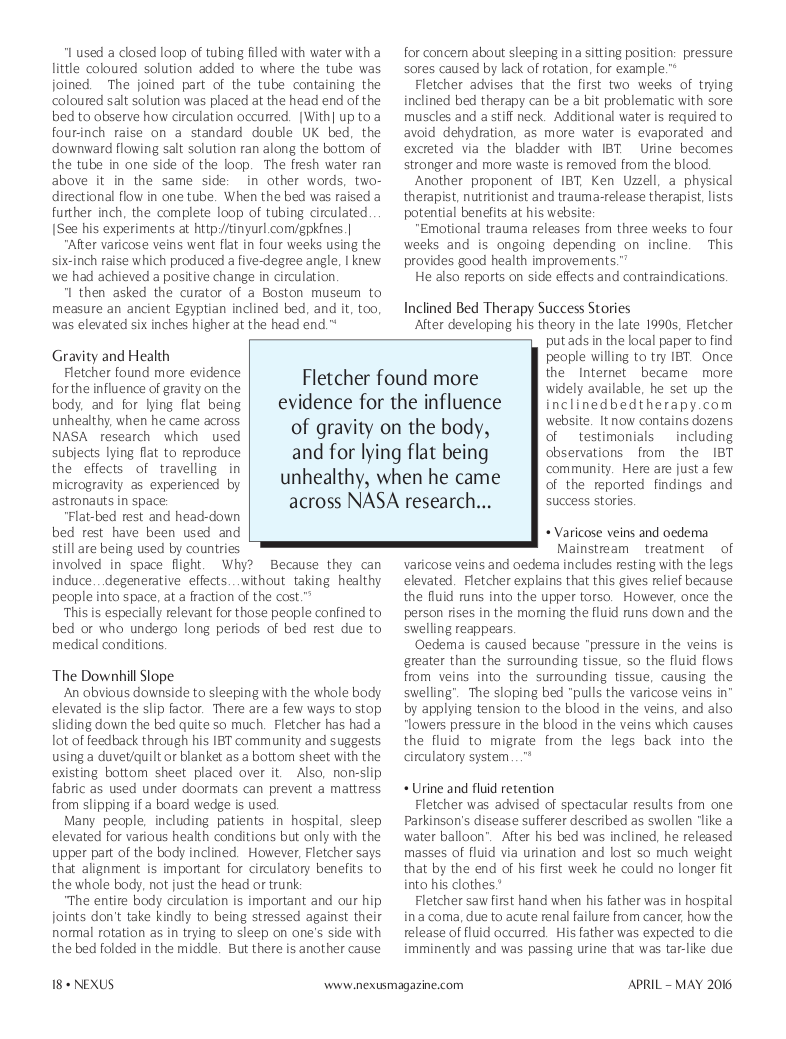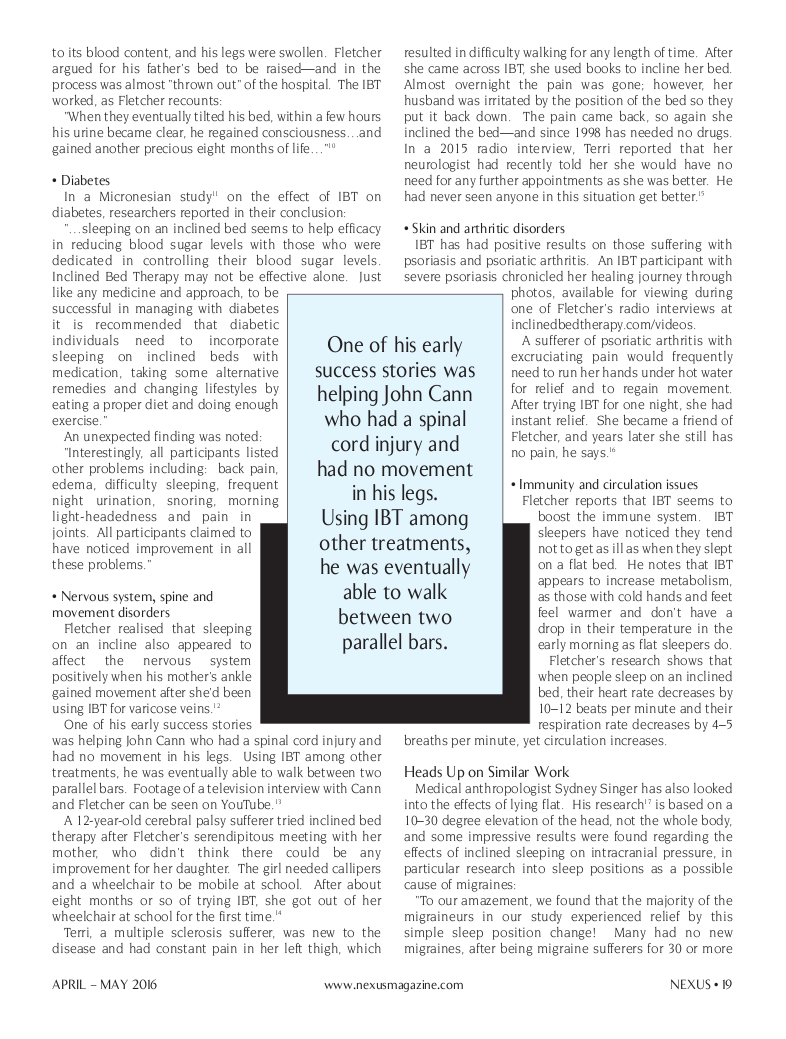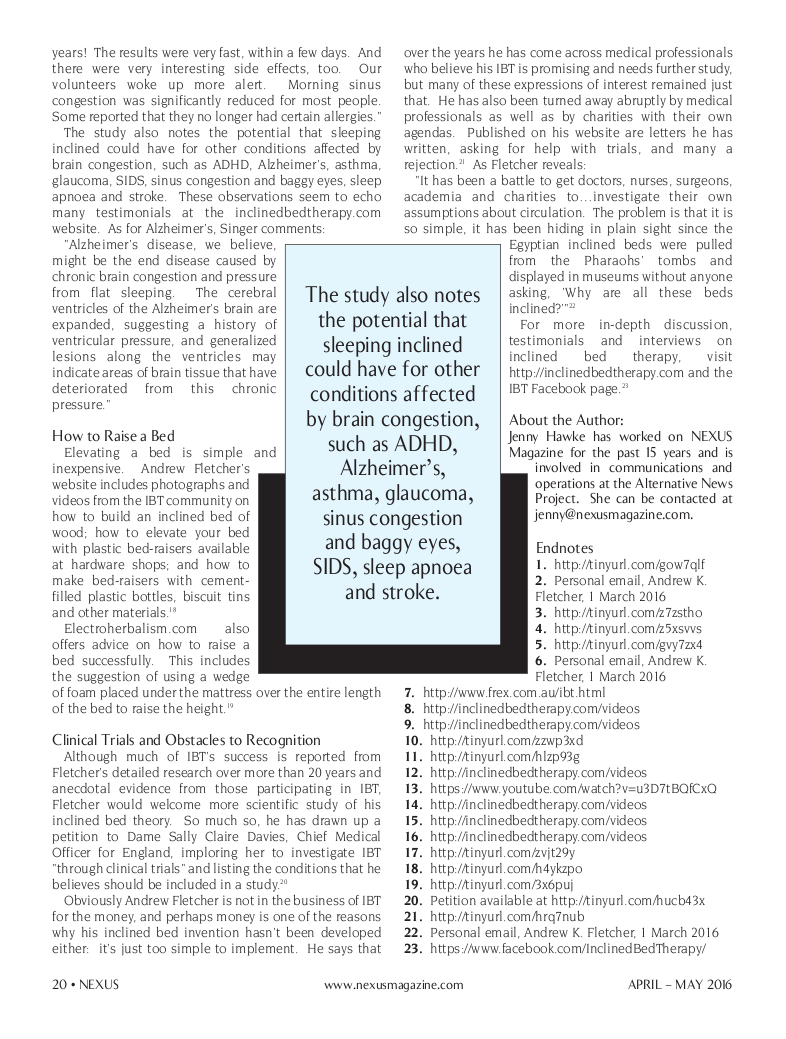INCLINED BED THERAPY A NEW ANGLE ON HEALTH
Sleeping on a bed inclined at five degrees has great benefits for circulation, metabolism and the immune system. It can also ease a range of conditions from Alzheimer's disease, diabetes and glaucoma to migraines, multiple sclerosis and varicose veins.
by Jenny Hawke ©March 2016 NEXUS Magazine




Free PDF Dowloads:
files/inclined_bed_therapy_nexus_magazine_article.pdf
Click To Download from Nexus Magazine
There are some things in life that we seem to accept without question For most of us in Western countries, sleeping in a honzontal position is one of them However, after studying the circulatory system in plants, one man questioned the logic in our flat bed theory Andrew K Fletcher has found that raising a bed six to eight inches (-15 to ^20 cm} at the head seems to generate remarkable improvements for many people suffering conditions such as circulatory and respiratory issues, diabetes, leg ulcers, migraines, multiple sclerosis, oedema. Parkinson's disease, skin problems, spinal cord in|uries, varicose veins and many more
How Does it Work?
The connection between plants and raising one's bed six degrees to sleep on an incline may seem strange, but Andrew Fletcher an Englishman with a mechanical engmeenng background and an avid interest in how things work, was initially intngued by the circulation of sap in plants The question isn't about how trees raise water from their roots up to their leaves, as this implies a one-way flow, but about how trees circulate sap He says the downward flow generates return flow via molecular drag Sap becomes dense because 9K per cent of the water is evaporated from leaves Sap is always denser at the top of a tree, and gravity dictates that this nutrient-dense sap will move tc anything acting as a sink down the tree, such as fruit, the trunk, branches or roots The upward flow is always less dense than the downward flow
Once Fletcher made this discovery, he realised the possible implications if it were applied to the human body Some may not agree entirely with Fletcher's plant sap circulation theory1, but to those gaining relief from his inclined bed therapy this is a moot point Fletcher elaborates
'What I'm saying is that circulation began long before the heart developed, and this primary circulation continues to assist the heart, providing we take the direction of gravity into account It works on the pnnciple that blood entering the capillary vessels in the lungs provides the water and carbon dioxide that we evaporate with each breath The blood therefore must become denser exiting the lungs, then passes through the heart and is in|ected back into the mam artery, effectively adding denser blood to create a pulsatile flow predominantly down towards the kidneys |T|he blood entering the venous return from the kidneys is always less dense than the arterial blood flowing to the kidneys "'
This was a Eureka moment of such magnitude it went off the scale forme and instantly gave birth to Inclined Bed Therapy (IBT)," he notes'
Fletcher explains how he came to the conclusion that six inches is the ideal height and five degrees the optimum angle to incline a standard double bed for good health (the height to incline a bed can vary slightly depending on the length of the bed. but is based on an angle of around five degrees}
APRIL-MAY 2OI6
https://www.nexusmagazine.com/
